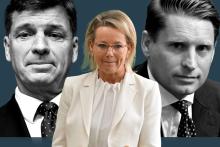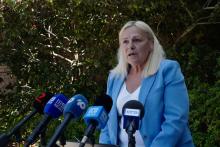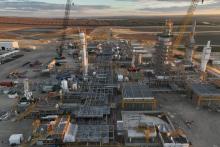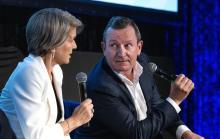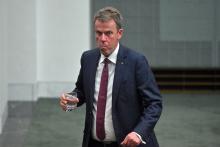The state government has said that classes will embark on a soft reopening in Term 2, as government and schools continue to debate whether teachers should have access to PPE.


The state government has said that classes will embark on a soft reopening in term two, as government and schools continue to debate whether teachers should have access to PPE.
That comes after Prime Minister Scott Morrison yesterday announced seven principles that schools should follow in response to the COVID-19 pandemic.
Those principles assure that, among others, schools will remain a safe and healthy space for children, while stipulating that states and territories will have the ultimate say on how schools will be managed during the pandemic.
That means schools will return as normal in term two in jurisdictions such as the Northern Territory, while others, including Victoria, will continue with a program of remote learning.
Premier Mark McGowan had stated yesterday his preference to see classes return as normal in term two, but added that public health concerns would guide his decision-making.
Today, he announced that classes will operate at the beginning of term two by accommodating for a mix of in-person and remote learning.
Students in years 11 and 12 will be encouraged to return to in-person learning.
That policy will be reviewed in the third week of the term, and it is expected that all independent and religious schools will follow the state government’s guidance.
"We have carefully considered options for the start of term two, based on the best health advice," Mr McGowan said.
"This soft opening is about transitioning students back into our classrooms in a responsible manner, to receive the best education, without risking the health of students, staff or parents.
"The return of year 11 and 12 students is prioritised to give them the best chance to complete their course requirements, while practicing good social distancing.
"This is about striking the right balance for Western Australian schools, and it gives us the opportunity to review the situation and adjust accordingly when it's suitable to do so.
"Once again, I thank our teachers and school staff, who continue to play a crucial role educating our children during this difficult and evolving time."
Education Minister Sue Ellery acknowledged that the state government had listened to teacher’s health concerns in formulating the reopening plan, and had incorporated relevant advice and suggestions from the medical community.
She confirmed that the quality and content of education for students will be standardised, regardless of where students are learning from.
"The classroom is still the best place for all students to learn," Ms Ellery said.
"Learning in the classroom for year 11 and 12 students must be the priority so we strongly encourage they attend school when it starts.
"It's critical that all other students continue to have access to their teachers which is why our teachers will be in the classroom.
"Whether students are learning at school or at home, either online or with printed materials, all students will get an education.
"We will be significantly ramping up the cleaning in schools as well as continuing to observe social distancing measures so that every teacher, staff member and student can be protected and kept safe.
"I want to assure parents that the vital services provided by education assistants, Aboriginal and Islander education officers, school psychologists and chaplains will continue to help students through these unusual times."
While a reopening of Western Australia's schools will include a swath of new hygiene practices, such as the shuttering of all swimming pools and, where necessary, staff rooms, Ms Ellery said that based on available medical advice, PPE was not of any value to teachers or staff.
Several key figures however have raised the issue of teachers being able to access PPE in term two, including State School Teachers Union of WA president Pat Byrne and Australian Principals Federation of WA president Bevan Ripp.
Opposition leader Liza Harvey today said the government needed to consider these concerns when making a decision on whether classes should resume as normal in term two.
“We need to give them the respect they deserve and consider this request really carefully and do it before kids are sent back to school,” she said.
“The last thing we want is a principal closing down a school because they are trying to protect their staff and they are not being listened to.”
Mrs Harvey’s call for PPE in the classroom is in opposition to the view held by Mr Morrison, who yesterday said that classrooms were generally safe, and that teachers should practice social distancing while interacting with other staff members.
Federal Education Minister Dan Tehan echoed those comments today, calling for practical measures like staggered start times for classes, recess and lunch, as opposed to offering PPE to staff.
Those views have so far been backed up by key members in the medical community, including deputy chief medical officer Nick Coatsworth, who said yesterday that teachers were not at a high enough risk to require PPE.
The Australian Health Protection Principal Committee (AHPPC) has likewise said teachers do not require protective equipment.
Australian Medical Association WA president Andrew Miller has not directly requested that teachers be given PPE, but has said that schools should institute fever testing, cleaning, and reduced classes as cautionary measures.
It is believed that children are at significantly lower risk of transmitting and being infected with COVID-19 and are generally not thought to suffer severe symptoms as a result of the virus.
The medical community remains split however on what role, if any, children play in spreading the disease asymptomatically.
Term two will commence on April 29.







